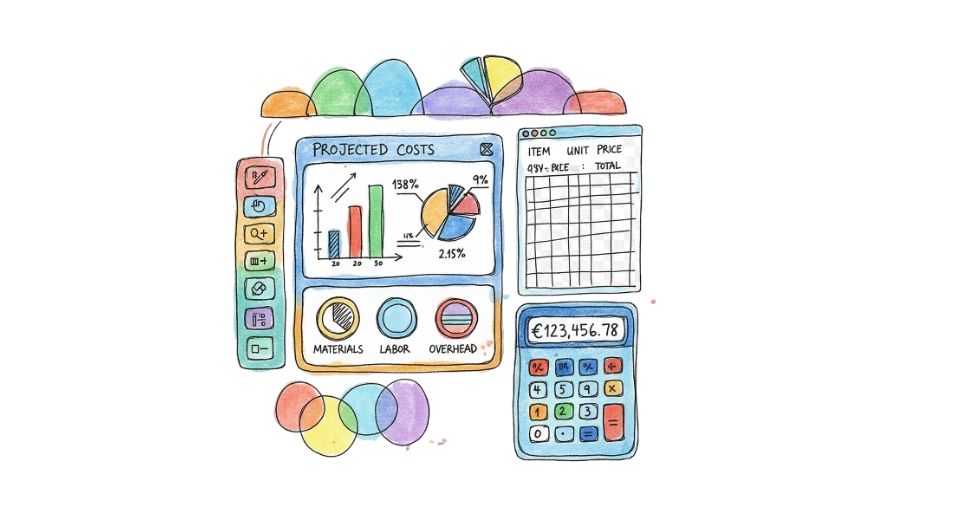
Sep 25, 2025

All building construction, product development, and infrastructure projects begin with a basic question, how much will it cost? Businesses, governments, and service providers require sensible means of estimating costs prior to expending resources. The Global Cost-Estimating Software Market as uncovered by Metastat Insight demonstrates this mutual necessity by projecting how businesses globally are adopting sophisticated technology to substitute uncertainty with formalized planning. Increased awareness of responsibility, effectiveness, and fiscal transparency has instilled fresh momentum toward solutions that provide higher precision to budgeting across all industries.
Time horizons are more limited, regulatory requirements are narrower, and resources are monitored under the microscope as never before. Hand calculation or simple spreadsheets are no longer able to provide the consistency and accuracy required to make educated decisions. As project size and interconnectedness grow, the effects of bad estimates become materially more serious. Cost-estimating software in this setting offers a viable solution that brings reliability and consistency to the planning process, enabling organizations to minimize expensive overruns and enhance stakeholder confidence. How It Works / Why It's Valuable At its simplest, cost-estimating software simplifies forecasting costs by integrating databases, past data, and sophisticated algorithms into a single package. The systems are more capable of calculating materials, labour, logistics, and outside influences than hand calculations.
Value lies in speed, scalability, and transparency. Construction, manufacturing, or services - the software can be utilized by teams to design multiple scenarios of a project and determine where efficiencies can be made. With the exception of forecasting, most platforms contain collaborative tools, so teams that are dispersed across departments or geography can enter information without disruption. This eliminates miscommunication and enables joint project planning. Growth Story / Technological Evolution
The cost-estimating software market did not crop up overnight. The growth story has been one of a gradual transition away from spreadsheets to professional-grade solutions with the capacity to deal with large and diversified datasets.
Early adopters secretly showed gains in project output, paving the way for broader adoption. With time, support for project management applications, cloud deployment, and ease of use have turned such applications from specialized software into mass requirement. Addition of predictive analytics and auto-reporting features has further established the position of cost-estimating software, keeping pace with digital transformation innovation in various industries. Regional or Global Trends
Geographic adoption of cost-estimating software also differs geographically due to differences in industrial priorities and the levels of development. Advanced construction and infrastructure industries drive adoption since competitive forces necessitate better planning. Adoption in the emergent economies with expanding urbanization and pressure on infrastructure also grows.
Government spending on transportation, housing, and public buildings triggers a corresponding demand for credible cost-estimating tools. In addition, technology-starved areas are looking into cloud-based solutions to reach small businesses and increase coverage, creating new markets and geographically expanding the industry.
Challenges and Opportunities Albeit beneficial, the cost-estimating software industry faces challenges. The initial investment in sophisticated systems could be off-putting to smaller units, and departure from conventional procedures can be resisted by entrenched teams. Data convergence is still a challenge, particularly if organizations must deal with multiple legacy systems. But these are opportunities. With cloud-based solutions driving costs of initial capital down and enhancing access, more organizations can contribute to digital adoption.
Ongoing innovation in data analysis, artificial intelligence, and real-time collaboration leave room for greater precision and broader acceptance. Collaborations between neighbouring industries, such as design and procurement, provide room for growth and differentiation. Why It Matters Now The world economy today requires greater efficiency, sustainability, and accountability. Unexpected costs not only compromise the time to completion of a project but may affect environmental and social obligations.
Proper cost estimation permits effective management of resources, reduced waste, and projects in accordance with sustainability objectives. Precise cost estimation also facilitates the digitalization of industries by enabling monetary planning to catch up with technological advancements. The Global Cost-Estimating Software Market as per Metastat Insight shows how this technology is becoming increasingly important as companies seek smarter means of managing resources, reducing risk, and achieving outcomes. Its reach goes beyond budgeting, altering project planning, execution, and delivery in the years to come.
Drop us an email at:
Call us on:
+1 5186502376
+91 73850 57479